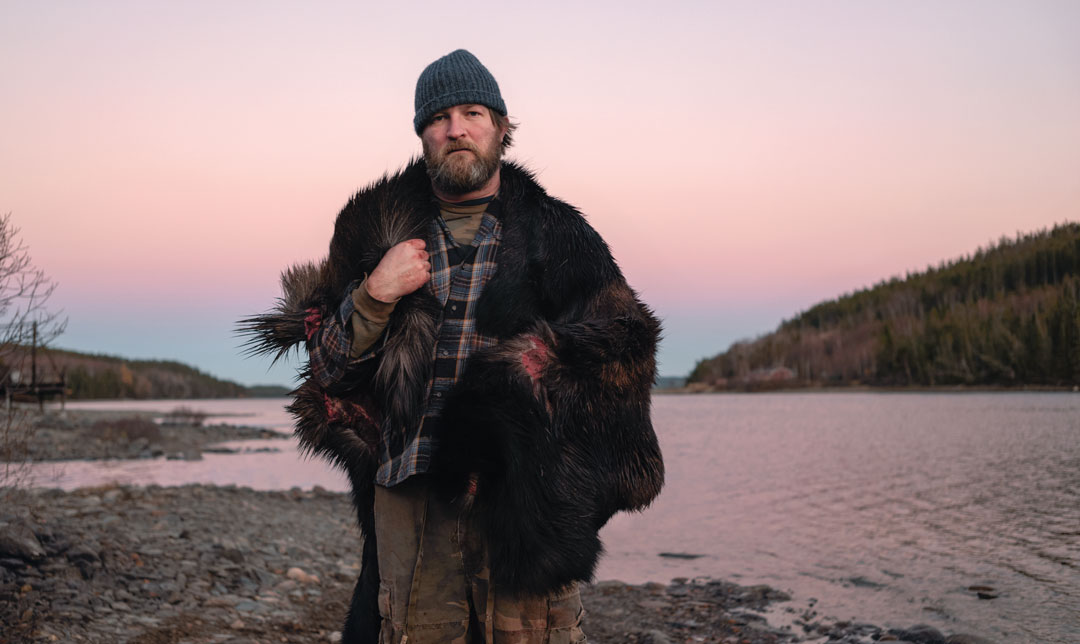
Phaidon Introductions: Jeremy Charles on Newfoundland
The restaurateur shares childhood memories of his early morning dashes to the bay to collect the fresh fish haul
Plenty of chefs favour local ingredients, but few have gathered, cooked and eaten them for as long as Jeremy Charles. The Newfoundland chef, restaurateur and Phaidon author was already selling cod offcuts door-to-door years before other ‘locavore’ cooks had even dreamed of slipping on chef whites. In this introduction to his new book, Wildness, he describes how his upbringing, right on the edge of North America, fed into his remarkable cookery.
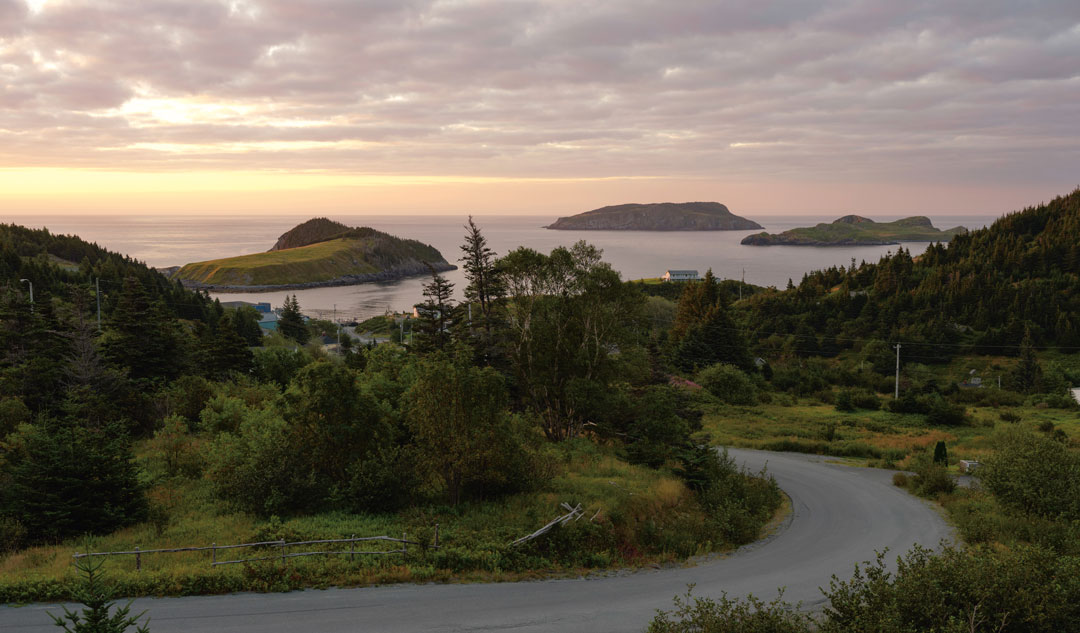
“I’ll never forget my grandmother’s green leather coat. When she was making bread, Nan would knead the dough, punch it down, then use that old thing to cover the bowl while it proofed. When I look back, I realise that’s how I fell in love with food: walking into her house as a child in the fishing community of Old Perlican, Newfoundland, I was always met with the smell of dough rising mixed with the scent of freshly baked loaves moments out of the oven, anticipation and reward all wrapped up into one.
“Newfoundland is an isolated, rocky island off the east coast of Canada, in the middle of the Atlantic Ocean. I grew up in Mount Pearl, a suburb of the capital St. John’s, the oldest city in North America. My dad was a postal carrier, while my mother managed a retail store downtown. They were high school sweethearts, and got married at the ripe old age of 20; not long after that my sister Marcy and I showed up. My mother Helen was a stickler for attention to detail, with the kindest of hearts. Whether it was baking the perfect pie or arranging fresh flowers on the table, everything was considered. I’d like to think I’ve taken after her in these respects. My father, Kerry, has been there for me through everything; he never once missed a hockey practice when I was a kid, and still is to this day a source of unwavering support.

"But it was through my grandmother’s kitchen that food entered the picture. From tending the vegetable garden to splitting cod heads with my grandfather and me, her influence on my cooking has been life-long. Nan could create amazing meals out of very little. I still look to her methods today as guiding principles in the kitchen: the simplicity of ingredients and preparation, working with an awareness of your environment, using what you have.
"People in Newfoundland have lived off the land, and from the ocean, for centuries. In times gone by, everyone grew their own vegetables. They picked berries from the barrens, and preserved crops by making pickles. Fishing was the main thing — cod, of course. Knitting the nets, salting down the fish, drying them on the flakes; it was a way of life that still existed when I was a kid. They lived organically, before the word was in common parlance.
"My grandfather, Pop, was always the first one up in the morning. He would put on the stove and get a cup of tea going. Some of my earliest memories are of getting up at sunrise with him; I remember stirring from sleep because of the smell of the furnace oil. While the tea was steeping, Pop would grill some of Nan’s bread. We’d have slices of toast and butter and homemade blueberry jam, from berries that we had picked together. He’d pour some tea into a saucer so it would cool off quickly.

"I’d slurp it straight down, holding it steady with my two hands. Pop always liked his tea sweet, with Carnation condensed milk and a teaspoon of sugar. Once we were done with our breakfast, we’d make our way to the living room to look out over the bay. From there, you could see the fishing boats coming back in, making their way around the bend. We’d watch what Nan called the shuff—that lovely white foam that’s left on the rocks after a wave crashes onto the shore. As soon as I saw boats breaking the horizon, I knew I had 15 minutes to get down to the wharf before they started unloading the fish. I’d grab my knife and an empty salt-beef bucket and run down there to collect cod tongues.
"Proper cod tongues, dusted in a little flour and salt to keep them together, then fried in pork fat, are a Newfoundland delicacy — a truly beautiful thing. Cutting the tongues from the fish was a way for us kids to make a little pocket money. First, the fishermen would split the fish to remove the innards. Then they’d slide them down the length of the prep table into a large grey plastic box. That’s where we’d be lined up ready to cut the tongues. It was pretty rapid-fire — those fishermen weren’t waiting for anybody, especially not us.
"When I first started, I went straight in with my knife out. All the other kids looked at me like I was crazy. Then one of the older fisherman explained that you can’t approach it like that, knife at the ready, because you could really hurt somebody. It was such a “townie” move, but I learned quickly. After diving into the box, we’d grab a cod and hang its head over the side of the box and cut out the tongue as fast as we could. It was all about efficiency. The tongues would then be thrown into our salt-beef pails.
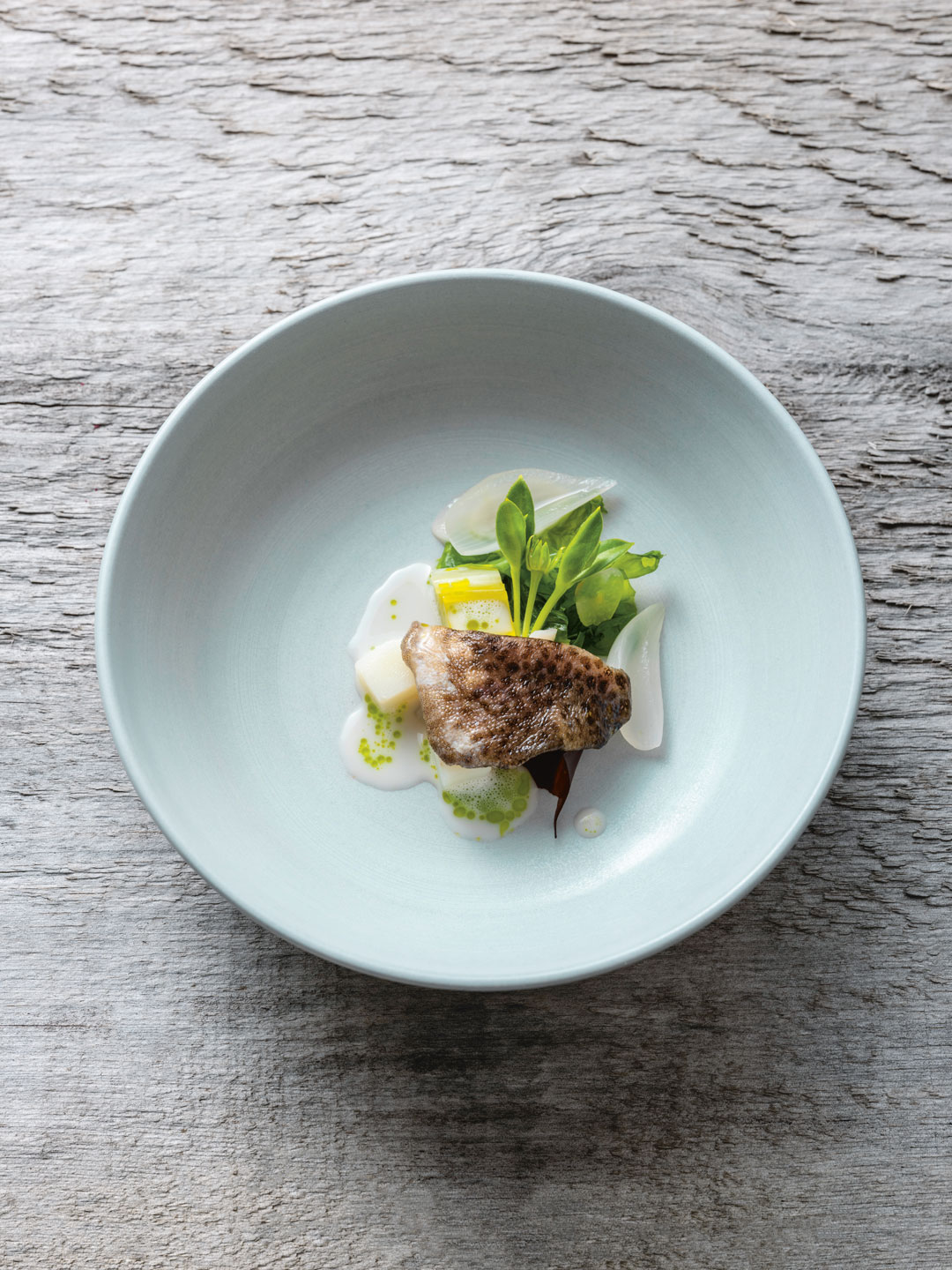
"Pails in hands, we’d then head to a scale station, where we’d weigh off our bounty. Our faces and clothes would be coated in fish bits and dirt. There were often tourists on the wharf, and we’d go up and see if they wanted fresh tongues. Nan would make calls to friends looking for pre-orders. I’d also go knocking door to door. Who could say no to a kid with fresh cod tongues? They were a quick and easy sell for the most part. I sold enough that first summer to go buy a fishing rod, which was the start of another passion of mine.
"Everything changed when I was sixteen. The way we all lived here in Newfoundland changed dramatically with the cod moratorium in 1992. Due to many years of commercial overfishing, cod stocks were at an all-time low. Fisheries officials determined that, unless there was a complete halt on fishing cod, their populations might never rebound.
"It's hard to explain what an immense shock the cod moratorium was to Newfoundlanders. It was the greatest mass layoff in Canadian history: 30,000 people were suddenly out of work. And there just weren't many other options at that time in Newfoundland. Since then, of course, new opportunities have arisen. We've become a booming tourism destination; we've developed a world-class shellfish industry; we've been rediscovering our regional culinary traditions — and once-depleted cod stocks have also been gradually bouncing back. But at the time, the moratorium was devastating for so many families. Many of us felt that our only choices lay elsewhere.

"In 1995, aged nineteen, I left the island for Montreal with my girlfriend, Sarah. She was attending Dawson College to study design, and I started working at a fly-fishing shop in Old Montreal, tying salmon flies to pay the rent. I think I got the job for the sole reason that I was from Newfoundland. A year later, I decided to enroll at St. Pius X Culinary Institute after seeing an advertisement in the local paper.
"When I left culinary school in 1997, I started work as a commis in the kitchen at Mediterraneo on Saint Laurent Boulevard under chef Claude Pelletier. In 2001 we decided to make our way to Chicago, where Sarah was working for a design firm, and I was cooking as a private chef. Changing my pace and working in this type of environment meant I had a lot of nights off, which I spent staging at restaurants such as Blackbird — it was amazing to meet the likes of the late Charlie Trotter and Paul Kahan, two of the biggest influences on the city’s food culture. Living in Chicago was so inspiring in so many ways for me, and not just the amazing culinary scene; there’s also beautiful architecture, music… and baseball.
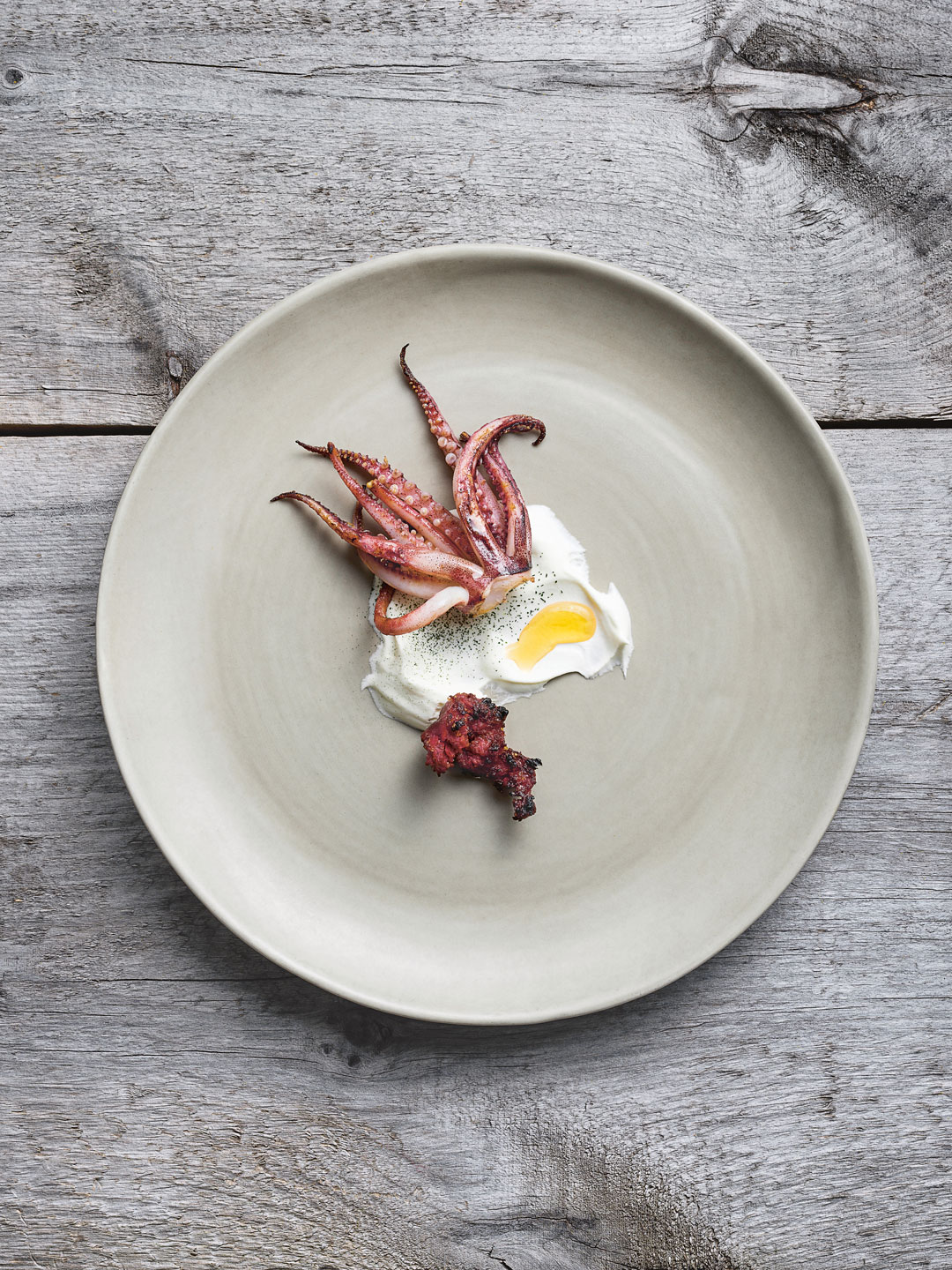
"But after five years, home was calling; the island is almost magnetic. Sarah and I got married in Newfoundland in the summer of 2006, and on that trip home, we knew we had to come back. I was offered a job as the executive chef at a brand new restaurant called Atlantica, a few miles outside St. John’s in Portugal Cove, and I met my future partner in Raymonds, Jeremy Bonia. Jeremy and I had a shared passion for food, wine, and fly fishing, and we hit it off right away. Little did he know at that first meeting, I would end up convincing him to quit carpentry and join me at Atlantica to run the front of house and wine service.
"A year in, we got the news that we had won Canada’s Best New Restaurant 2007 award from EnRoute magazine. It was the first time somewhere east of Montreal had been recognized. It also opened the doors for us to be a part of culinary events such as the Canadian Chefs̓’ Congress, hosted by Michael Stadtlander. Michael is a true pioneer of the farm-to-table movement. I took my first trip to his farm in Ontario after meeting him at the congress, and it served to further open my eyes to the incredible inspiration available in my own backyard. Being around Michael gave me the confidence to go back and deepen those connections to the land. Newfoundland has an amazing larder to draw from. We wanted to celebrate our regional cuisine — to use all the parts of the moose, every scrap of the cod, all the edible plants that grow in the wild. We were set on our path; we spent the next few years focusing on developing relationships with farmers, fisherman, and hunters across the province, strengthening our understanding of what Newfoundland is, and the bounty that the land and sea provide.
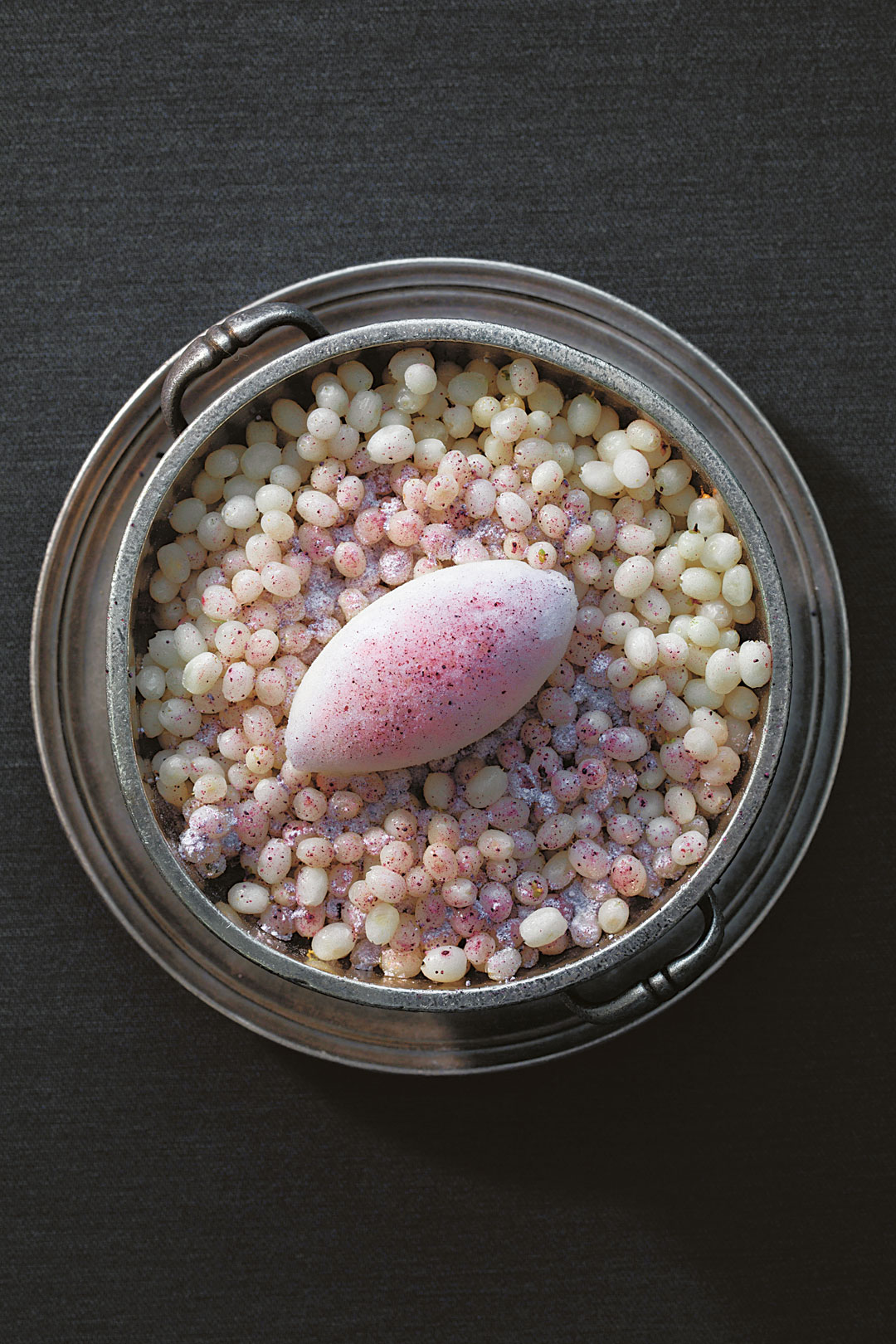
"We had been at Atlantica for three years when Jeremy and I felt like it was the right time to step into our own place. We decided to call it Raymonds, after my grandfather Raymond Baggs, and Jeremy’s father, Raymond Bonia. The restaurant opened its doors in November of 2010. Raymonds has always been about creating a sense of place: Newfoundland ingredients, presented in an honest but refined way, with attention to detail and impeccable service. We develop our menus based on what we have at that very moment.
"We live in one of the only places in North America where wild game can be served in restaurants. Here we are, isolated on an island, yet we’re surrounded by partridge, organic wild edibles, fresh sea urchins, and razor clams — the purest seafood and wild meats on earth. Plus, our corner stores are filled with shelf-stable products you can only find in Newfoundland, like Fussell’s Thick Cream, Jam Jams from Purity Factories, and Mount Scio’s Savoury Farm dried savoury, the latter of which we use for stuffing and dressing.
"There’s nothing I love more than being out on the land, catching a monster brook trout, or scouring the shore for thin slabs of rock that we can use as serving planks. Going out on the land and being in the wild is healing. In that spirit, I hope that this book will provide a glimpse of how we do things—both in town and around the bay. I’m committed to this province, and I feel very fortunate to be able to live here, doing what I love. I’ve met so many amazing people along the way who have shaped and inspired me. And I will never let myself forget that it all started with something so simple: a moment in my Nan’s kitchen, with the smell of bread and that green leather coat."

For more on Jeremy's unique culinary outlook, as well as plenty of his recipes, order a copy of Wildness here.